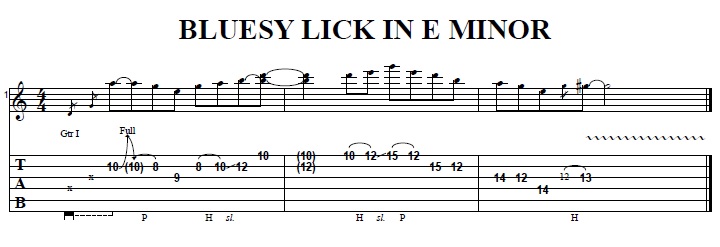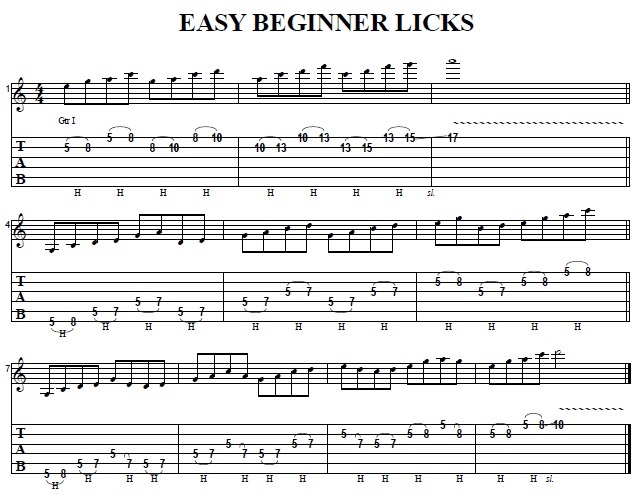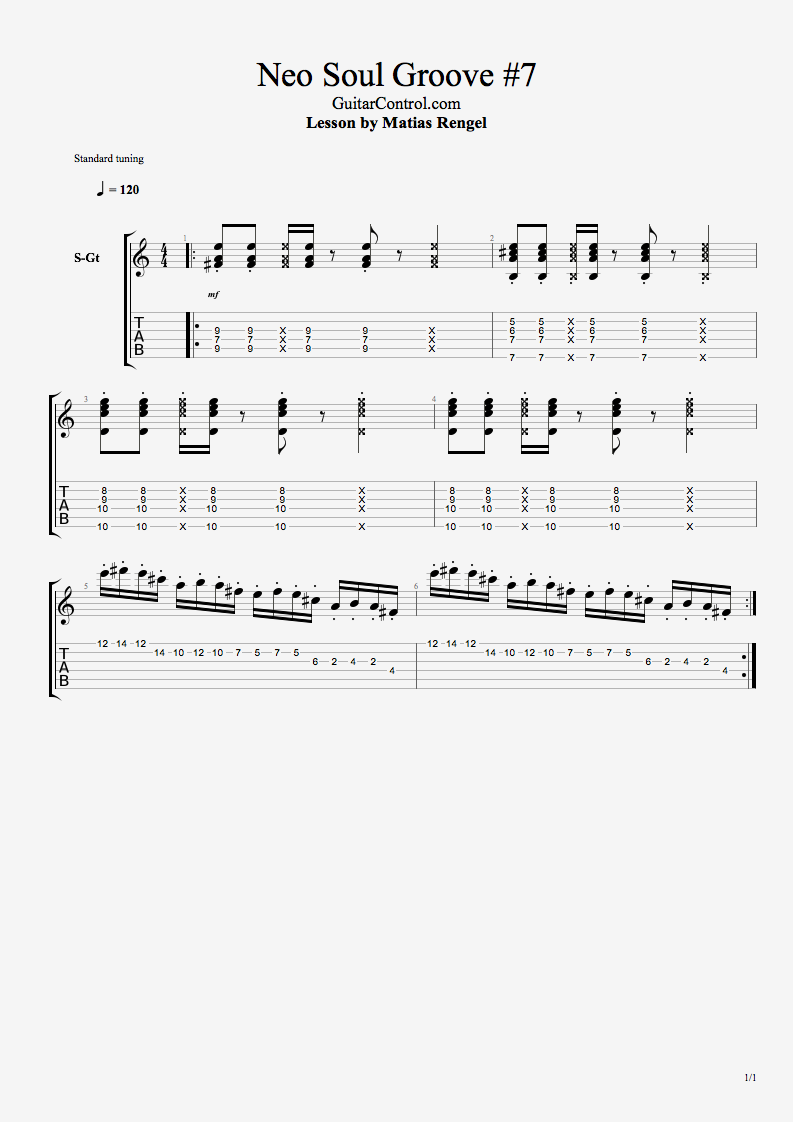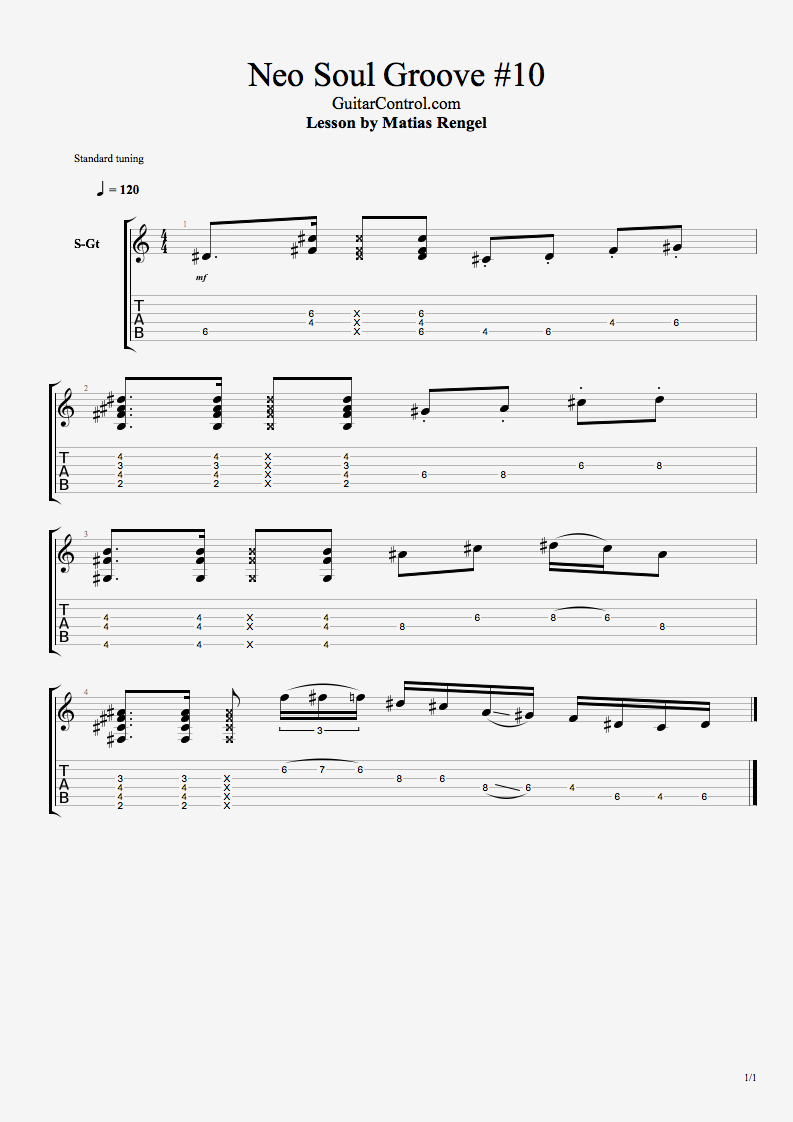
How To Play a Cool Funky Groove On Guitar – Rhythm Guitar Lesson On Funk Grooves

How To Play “Don’t Worry Be Happy” By Bobby McFerrin – Easy Acoustic Guitar Lesson w/ Sean Daniel
Hey, how’s it going this is Sean Daniel with Guitar Control today we’re giving you an extra dose of happiness which everybody needs, learning a super simple song called “Don’t Worry be Happy” by Bobby McFerrin. An absolute crowd-pleaser it’s going to take you less than 10 minutes to learn this song.
[contentwall] [/contentwall]
[/contentwall]
Click on the Tabs button to follow the chords and tabs.
We’re going to play with a capo on the 4th fret, feel free to play it whatever key you want. But we’re just going to use three chords and the truth for 4 slots and G, A minor, C, and G, so the song is really easy to learn we’re going to talk a little bit about strumming it, to kind of give it that happy peppy step.
This works better if you sway back and forth, what I mean so you should know these chords right off the back three most popular chords in guitar history are you the G major chord metal finger on the 3rd fret relative to the capo low E-string, pointer finger 2nd fret on the A-string and then my ring finger and my pinky on the 3rd fret together. You need all three over or both of them or you could have just the high E- string but you know this is about being happy we’re getting all your fingers involve leaving no digit behind.
So let’s talk about how we’re going to strum this, first I think this is the happiest way you could possibly strum a chord especially when you’re really feeling it. What I mean in the root note 1st we’re going right from the lowest point of the chord, so we have the lower, high dynamic of life and happiness you can’t have the highs about the loads that’s the strumming pattern the root note and I’m aiming for just the top of the court when I say the top it’s the G, B and E-strings if I hit more of them great by hit Lots don’t worry about it I’m just separating the entire guitar chord into just the E-string the highest three strings so one, two, three, and four, end.
Now the three end of this four count this bar of G is going to be the lower three strings down and up just on the lower three strings and not all six right if you’re living like this that’s not happy that’s the sound of his sanity and you probably need to get your medication changed right so we have low high and lowest three strings down up and then on the for counter eating another down stroke of just the high strings again so low, high, low, low, high, and then if you want to get an upstroke at the end to that be a 1, 2, 3, and 4 count otherwise known in commoners terms as down, down, down, up, down, up, down, again so that’s going to be the vibe that we’re going to be use. We’re just going to do that with two other chords.
Next one is going to be A minor same strumming pattern but now the root note in an A minor chord where we have open a middle finger to D ring finger to G pulling your finger 1B and open on the high string the runo’s going to be the A-string, so we’re going to aim for the A-string we go if you hit the low E-string an accident it’s not a big deal okay don’t worry about it once again do I have to even say it for aiming that rude no because eventually you want to be able to just hit exactly which ever no string you’re looking for without having to look at it right so hey the hi ever the board same thing is before down up on the lower part of the chord down upon the higher part and C chord again a lot of people place you like this ring finger 3rd fret of the A-string middle finger 2nd fret of the D-string pointer for your 1st fret then our root note is on the A-string.
I like playing it like this where I have my ring finger one string lower my pinky right behind it rude note is still in the same spot but again we’re getting all the fingers involved if we’re just having a party throwing a happiness party back to Z so there’s only three chords but there’s four spots, four chords okay every chord gets its own barre G, A minor, C and G.
Now when you’re counting it you might only want to play that G once but again remember 8 counts on that G if you cycle it so again G, A minor C, G, back in G and again. Sometimes it’s helpful to have some kind of mechanism in place to start it again what I mean by that is like I’ll do an example so we have G, A minor to C major, D major. You may have noticed at the end of that last bar of G I just said all down strokes this C right 2, 3, 4, 0, 2, 3, 4, back to G and because I made that dynamic of his G, 2, 3, 4, the next time around when I hit the root note on the G it seems it doesn’t seem like I’m doing the same thing instead of just like one more gone not lost alright that’s not the sound of happiness that’s the sound of the slow inevitable march to death you don’t want to have that you want to have a little bit of action we’re only here for a short time people that’s why I did a great decision by choosing the guitar control video with Sean Daniel to watch for non-palm muting about palm-muting just like in life is your muffling your happiness because you don’t want to be all over board telling people how happy you are there’s nothing more annoying than that way I’m doing that taking the side of my hand judo chop the bridge and that’s nothing to get good at is just angering you see like if you look at my wrist right when I’m doing this I’m locked in to the bridge here I’m not okay a lot more control you can do anything you want by having your you know your wrist lock in you do anything all you need to do is get this action down right here okay so yeah and you can do it muted for maybe like the verse everything is so applying low high down up down up low high down I’m down am a minor and see how much more reserve that is it’s like business casual happiness back to G and then one of your get home take off your shoes make it nice bath open it up okay so the last thing I want to talk about is how we numbered this chord progression again this is on a capo this is in the key of you know wherever we’re ending here which is a G this isn’t actually a G no this is the third far relative to the capo but this note right here is actually a B so we’re doing this in the key of B if we were to move the capo one front lower you’re doing even b-flat another one a so on so forth right until we’d eventually get to doing it in the key of G like this that’s why Capo’s are great because they can to help us transpose songs depending on where you want to sing you don’t advocate both don’t worry we can transpose this because all of this is really common chord progression it’s what’s called a 1 a 1 for the 2 to the 2 chord 4 chord 1 1 2 4 1 okay I got this was from the notes in the key of G right since this is G a minor C we can label this and communicate with other musicians because communication is a great way to keep the happiness falling right in the key of G we have seven notes one two three four five six seven eight the first note is a G that’s why it’s the one chord any one of these notes can become a chord one chord to the two chord a necklace we my of two chord is almost always minor any key one two three four C is the fourth note G ABC the four chord of C major back to G so that’s a one two four one the sound of a pure happiness all right now you don’t have a capo you could do it with different chords all right let’s guy what’s a one two four one let’s say maybe that’s uh I want to do a little bit higher let’s do in the key of a I have to do is find out what a is right you know a there’s one two and a was too note after a B minor what’s four and A one two three four D back so that’s how you can easily transpose even if you don’t have a capable to find whatever one is easiest for you to sing it okay so again make sure you click that link below because we have the chords of it all the lyrics and you know what make up your own lyrics because no one will know the difference as long as it’s not too dark so thanks for sticking with us thanks checking out the guitar control channel.
Make sure you subscribe on our You Tube Channel and we’ll see you in our next video lessons, thanks for watching.
[ninja-popup ID=715]
– Click here to get Sean Daniel’s Secrets of Hendrix: DECODED – GO!!
Easy Acoustic Guitar Lesson

Cool Guitar Groove With Chord Inversions And More – Neo Soul Rhythm Guitar Lesson
Learn How To Play Easy Beginner Guitar Licks – Lead Guitar Lesson For Beginners
How to Play a Killer Neo Soul Chord Progression – Rhythm Jazzy Guitar Lesson
How To Play Natalie Imbruglia’s Torn – Acoustic Guitar Lesson Made Easy Way W/ Sean Daniel
Hey, how’s it going this is Shawn Daniel with Guitar Control, we’re learning a classic 90s rock song “Torn” by Natalie Imbruglia. A fantastic song with three different parts, a really great exercise and kind of finding your way around a Key, make sure to check the image above to follow the chords and tabs.
[contentwall] [/contentwall]
[/contentwall]
Click on the Tabs button to follow chords and tabs.
[ninja-popup ID=715]
So we’re going to start on the 1 chord, F major bar 9th place bar chord. We’re actually going to play just the middle four strings if you hit that high E string as open as an F major 7 chord but we’ve got ring finger 3A pinky, 3D middle finger, 2G pointer finger, 1B. I’m going down, up, down, up, down, up, up, down, up, down. This is going to be our version of how the original is strummed with the rest of the band down, up, down, then down. I’m down, up, down, sometimes I add some to make a little livelier for a solo acoustic presentation but basically the verse is just going to be a key to a minor to B flat major. So we can number these because we learned those notes off as a 1, 3, 4, chord progression. The 1 chord F major down, up, down, up, down, up, up, down, up, down, again down, up, down, up, down, up, down, up, down, to A minor.
Pointer finger 1st fret of the B-string, ring finger 3rd fret 2nd fret of the G-string, middle finger 2nd fret of the D-string highest five strings down, up, down, up, down, up, down, up, down, up, down, up, down, up, down, up, down to B flat.
B flat is tough for a lot of people I see a lot of books teach it like this, where your pointer finger is the 1st fret in high string then you got the 3rd fret of the B-string, G-string, B-string, pinky, ring, and middle relatively. I’m not the biggest fan of this shape I think it’s kind of difficult for readers to do and you’re much better off taking the F major shape and isn’t moving it toward your pointer finger lines up with the 6th fret much easier because going back to F, anyways there’s the 1st fret because it’s where my pointer fingers lined up or where the root note will be in a bar chord F, B-flat as long as you don’t hit the low and high strings you can really just run this one shape from F to a B flat, so playing this way it’s F to A minor 1, 2, 3, 4, to a 4 chord, that’s how my thumb chilling here muting the low E string because that would sound better, my pointer finger making sure the high E string, I’m not hearing the lower of a high string.
F major, A minor, B flat, that’s going to be the entire verse. The next part is going to be the pre-chorus some people call it a bridge. I think if it’s a pre-chorus D minor, C, A minor, C, end of the chorus. So D minor, C , A minor C we can number those again remember what is D and F 1, 2, 3, 4, 5, 6, the 6 board to the 3/4 or the 6 part to the 5 chord to the 3/4 to the 5 chord when you can think of chord progressions as numbers makes everything super easy right F to A minor to B flat that’s 1, 3, 4, much easier to just kind of organize that stuff in my opinion D minor pointer finger 1st fret on the high E string pinky or ring finger on the 3rd fret of the B-string middle finger 2nd fret on the G-string.
Same strumming pattern to a C, pointer finger 1st fret of the B-string, you can play with your middle finger to D, ring finger 3a. I’m a big fan of playing it with your pinky 3a and your ring finger 3e. I just like that better sounds, a little fuller totally (optional) it’s up to you alright. So D minor 6 chord to the 5 chord to A minor which we already talked about was the 3 chord F, G, A and back to C, and then we go to the most common chord progressions in all of Western music history a 1, 5, 6, 4, chord progression.
Millions of songs are transposed to another key, even just like hearing it might make more sense if you did another key real just side note a one, five, six, four, in the key of C would sound like. My song familiar to some people but the point is a common chord progression that you should have under your belt and know how to navigate three different keys start on the one chord and the key of F which is the F to C, easy transition what’s the 6th chord in the key of F, D, D minor to B flat, back to F. So this is the chords of the song, that’s up to speed now this is one example of this B flat, could be better if you want to keep everything in the same ballpark.
That’s why it’s great to know different chord progressions for different things but in my opinion this B flat is a lot easier and will make the sound really good. Totally it’s up to you, I’m not going force you to do anything you don’t want, and we’re just trying to play some Natalie Imbruglia songs.
Here’s a recap, three parts the 1st part is F with the strumming power we’re going to go through the chords out the strumming, early half to A minor to B flat. Remember that’s 1, 3, 4, and when you know the numbers you can easily transpose these to other keys that might fit your singing voice or your singers singing voice better.
After that we have a 6 to a 5, to a 3, to a 2, to a 5, to a 2, to a 1, to a 5, to a 6, to a 4, and that’s it, that’s the whole thing. Make sure to subscribe on our You Tube Channel and we’ll see you in our next video lessons, thanks for watching.
– Click here to get Sean Daniel’s Secrets of Hendrix: DECODED – GO!!
18 D Chord Guitar Songs and Lessons
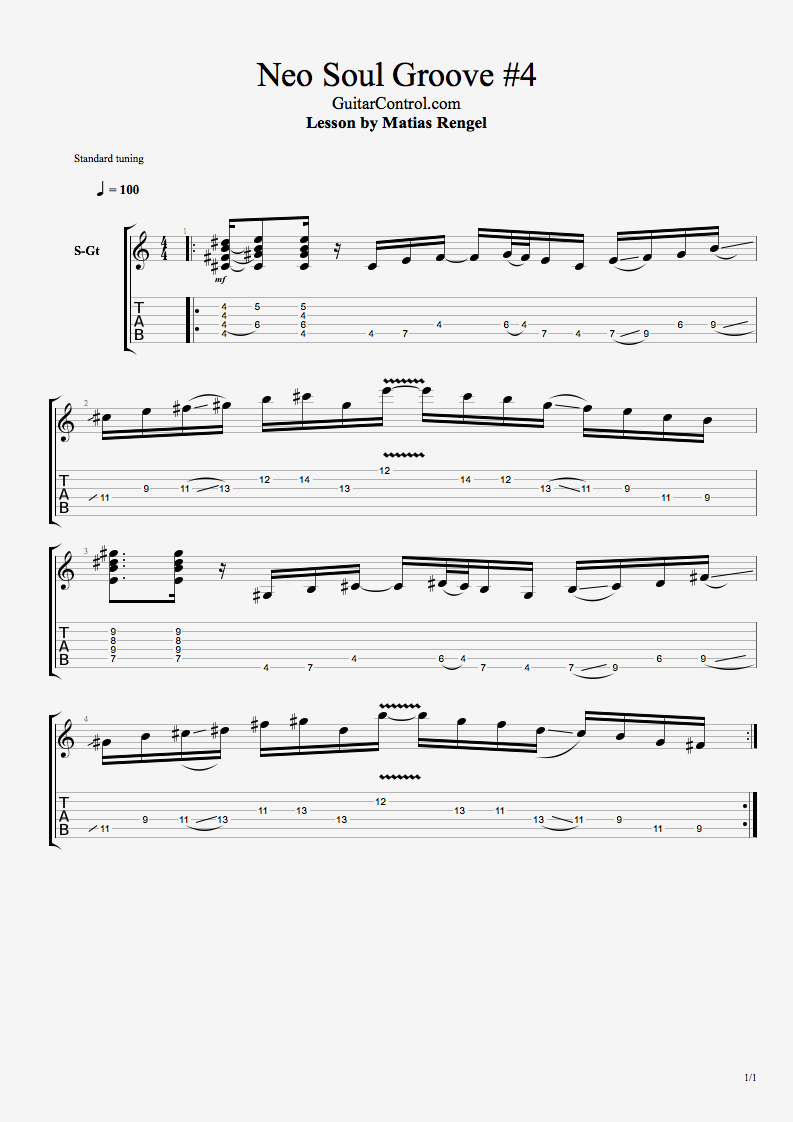
Awesome Neo Soul Groove For Electric Guitar – Fusion Guitar Lesson w/ Matias Rengel
Hey, this is Matias Rengel with Guitar Control, today you’ll be learning this really cool groove. Click on the Tabs button to follow the chords and tabs. The first thing that I would like to do is to play this at a slower speed, so we got two different things going on here we got …

How To Play Circles By Post Malone | With Tabs and Video | Easy Acoustic Guitar Lesson
Check out this free Circles By Post Malone Easy Acoustic Guitar Lesson. With the variety of chords in this one, it makes it a great lesson for players of all skill levels and with an easy to follow chord chart you’re sure to get this Easy Acoustic Guitar Lesson under your belt in record time.
Introduction
Click on the Tabs button to follow the chords and tabs for Circles By Post Malone Easy Acoustic Guitar Lesson.
It’s four chords on a loop for this Easy Acoustic Guitar Lesson, but there are actually variations of those chords that we can do to make it sound more like the song and have a cool, chill acoustic guitar version and we’re going to talk about some easy ways to do it and ways to kind of incorporate that cool baseline into this Circles By Post Malone Easy Acoustic Guitar Lesson.
Circles Chords
First things first, the chords for this Easy Acoustic Guitar Lesson are C major to a C major 7, to F major, to F minor, we’ll go over those chords in more detail in a second, that’s it C, C major 7, F, F minor. Not too bad right 1, 2, 3, 4, 4, count. Each one gets its own bar and we’re going to start by playing a C major with variations but basically I got my ring finger on the 3rd fret of the low E-string, pinky on the CMA-string 3rd fret of A-string, middle finger is on the 2nd fret of the D-string, the G-string is open, pointer finger on the 1st fret of the B-string.
To get that kind of choked staccato type sound for Circles By Post Malone, what I’m doing is, I down strum, taking my fretting hand and releasing the pressure. If I keep the pressure down that will be fine, but it’s not really like the song and I would recommend starting the choked and get the chords of the Easy Acoustic Guitar Lesson.
You must have somewhere to go otherwise, it’s going to sound the same, and the whole time you want to make it a little bit of a dynamic performance out of this Easy Acoustic Guitar Lesson. It’s the coordination between your fretting hand, your strumming in down, down, down, that’s how I’m playing it. The count is how you want to internalize it but I think its most like the song in that pattern, you’ll notice after that 1st bar the next count is taking my pointer finger off to make it a C major 7 that’s the easiest way to make a C major 7.
Any time you had a B note to a C chord you get a C major 7 and we’re going to get the F major chord to the F minor chord. I’m playing this as a barre chord, 1st we switch it to the non-bar chord version in a second but again by the 1st fret 3rd fret on the A-string, ring finger 3rd fret on the D-string, pinky middle finger to G, same thing as four and then we’re going to make an F minor. You’ll notice that the only thing that changes is your middle finger on the 2nd fret and ends up becoming your pointer finger on the 1st fret.
We’re flattening what’s called the 3rd of the F major chord and then getting the last spot of the 4th bar on the progression. Notice that I’m using my middle finger to abandon and pulling out my pointer finger to give myself some extra power to really get that G-string note, G# in there or A flat to ring out because that’s the hardest part doing a E-string with a barre chord on the 1st fret is getting that kind of sound, but not necessary as we’re going to showcase in just a second so you can play the whole song in this C major 7 same strumming pattern F minor.
That really cool bass line I think is something that we can pretty simply incorporate into the Circles By Post Malone Easy Acoustic Guitar Lesson chord progression. So far we’ve got this notes of our 3a which is a C note the root note of the C chord C, C, open D, back to C, same as 3, 3, 5, 3, and if you’re playing the bass along with the song you just go 3, 3, 5, 3, 2, 2, 2, 2, 2.
Now what is that note that 2nd fret of the A-string A, A sharp B, it’s a B. Like I said before when you add a B to a C chord you get a B or C major 7 chord. The reason is because B is a 7th note in the key of C, C, D, E, F, G, A, B. Now we can play any variation, the first C major 7 we did was by opening up the B-string by taking out pointer finger off which is kind of like a very pretty acoustic strumming way to play that Easy Acoustic Guitar Lesson.
Another way we can play a B with the C major chord is taking the root note, making your middle finger that guy right there. Now I have my middle finger to A, my ring finger is onto D, G is still open, our C note is now coming from the 1st fret on the B-string, and then open E. It has a little bit of a different feel especially if you can palm mute it In the F bar of this Easy Acoustic Guitar Lesson.
A lot of these are just different variations and options that you can do in this Easy Acoustic Guitar Lesson to get it to sound more like a combination between what the guitars are doing and what the base are doing. Now let’s talk about the F portion of the progression. So far basically, the back after the progression we have F major to F minor once again sometimes the easiest that has been done specifically on an acoustic guitar with thicker strings where the tension is always the highest to closest to the nut. That 1st fret is really hard to barre a lot of times, so one way to get around is to play this F chord like that 1st C major chord that we did. Keeping your pointer finger right there, moving everything else down A-string, now the middle four strings are 3A, 3D, 2G, 1B, which is the as before a barre chord.
Remember we have to change 2 to 1 so what we can do is focus on the A, D, and G-strings to get 3, 3, and 1/2 major F minor doesn’t really sound as good I think as a full barre chord but it’ll work and a pinch. Another thing that you can do for this Circles By Post Malone Easy Acoustic Guitar Lesson is kind of like a mini bar chord whereas 3A, 3D, kind of like a half bar.
We’re getting the 1st round of this Easy Acoustic Guitar Lesson, the G, and the B-string, just like that highest three strings. That’s another way you can play an F major 7, if you want to do an easier F major chord like just 3D, 2G, 1b again doesn’t totally sound exactly like the song but it’s just a different way to introduce yourself fuller barre chords. We’ve got a four count on C, if you’re having trouble with the strumming let’s do all down strokes for this down, down, down, down, down, down, down, down, and I’m going to palm mute this to make it a little easier to hear or taking the side of my hand and hitting the bridge down, down, down, down, down, down, down, down. Notice that time I use the lower beat down, down, down, down, F minor, non power chord way down, down, down, down, down, down, down, down, down, down, down, down, down, down, down, down. The rhythm is really important for this Easy Acoustic Guitar Lesson.
I want you to accompany yourself to do it, like your basic down to reemployment 1, 2, 3, and 4, and 1, 2, 3, and 4, that’s totally fine. I’m just a huge proponent learning as many songs as you can try and different things out, but I think this is a really great opportunity to try to incorporate a little bit more of the elements that make this Easy Acoustic Guitar Lesson on Circles by Post Malone so cool and catchy.
Then get those bass notes in and there’s the bridge for Circles By Post Malone, the chords are the same for the bridge but really just let it ring out C, C major 7, half F minor, however if you want to play it and resolve it on C . The last thing I want to talk about this progression is how we number it really this is just a one chord to a four chord all that means is in the key of C. We have C, the notes, and the c, d, e, f, g, a, b, like to talk about B being the 7th and the 4th note in the key of c, c, d, e, f, is f that is where the F major chord comes from so it is a one core to 1/4 this made yourself to a 4 chord to a minor four chord that’s how we’re going to communicate this and then back to C.
Hopefully you enjoyed Circles By Post Malone Easy Acoustic Guitar Lesson and you understood everything keep on rocking. Make sure to subscribe on our You Tube Channel and we’ll see you in our next video lessons, thanks for watching Circles By Post Malone Easy Acoustic Guitar Lesson.
– Click here to get Sean Daniel’s Secrets of Hendrix: DECODED – GO!!
Easy Guitar Song lessons
Supper Easy Acoustic Lessons and Songs to Play
